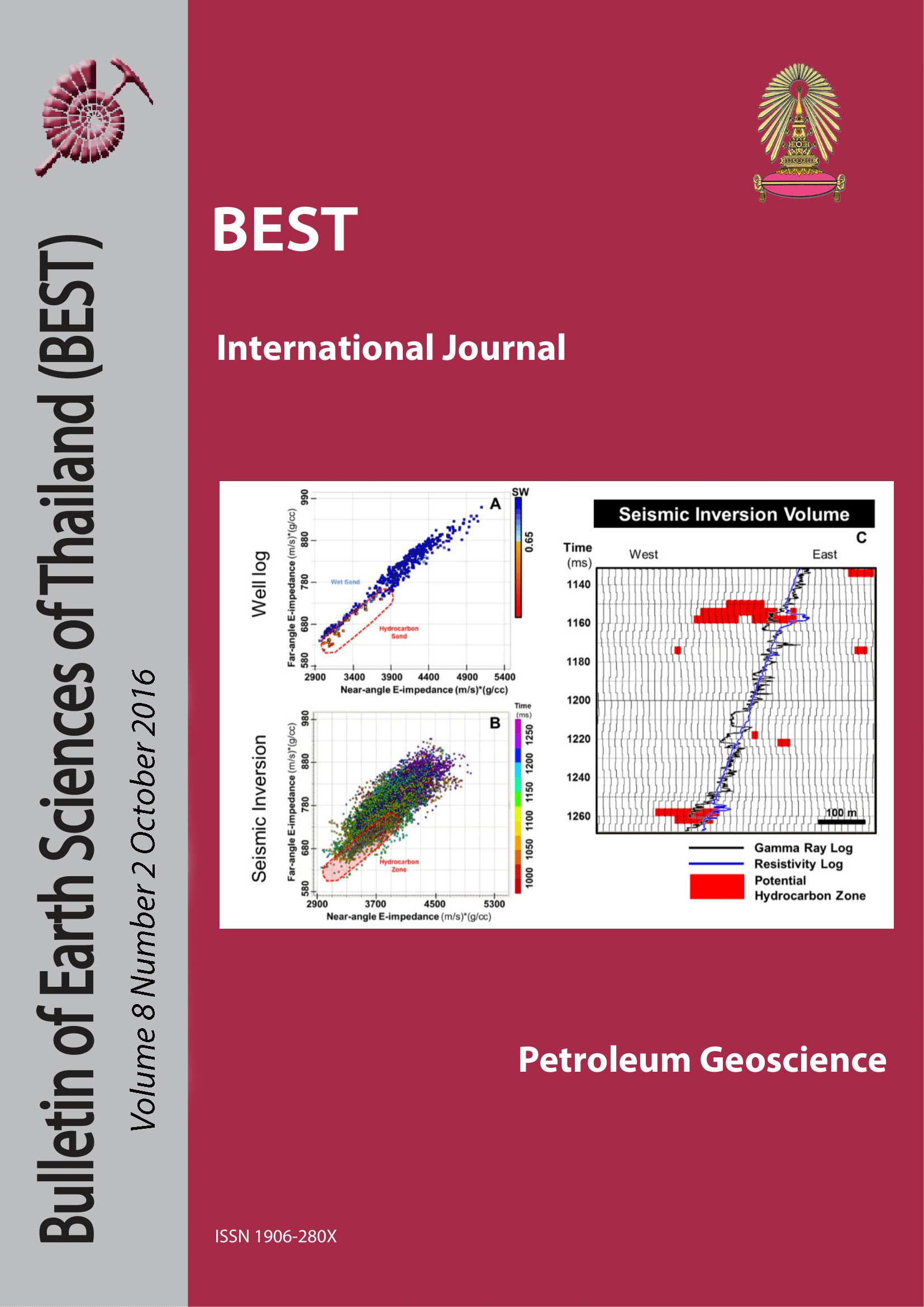THE SHUTDOWN OF DIAGENESIS IN THE EARLY PLIOCENE GLOBIGERINID LIMESTONES OF THE MUNDU FORMATION AND IMPLICATIONS FOR POROSITY AND PERMEABILITY LEVELS (EAST JAVA BASIN, INDONESIA)
Main Article Content
Abstract
Globigerinid limestones, in the Madura Strait of Indonesia, as producing reservoirs are unique. This reservoir sediment was deposited and winnowed in a deepwater complex with substantial bottom current reworking. Although there is now more than 800 meters of overburden sediment and a strong tectonic overprint, as seen in seismic, this reservoir didn’t experience significant diagenetic alteration. Early hydrocarbon emplacement ended the diagenetic process and preserved pristine intraparticle porosity with interconnection across foraminiferal punctae, so allowing connection between intrafossil and extrafossil porosity. The best reservoir quality occurs in globigerinid sands on Early Pliocene paleohighs where winnowing processes (bottom-current reworking) were stronger. Winnowing driven by bottom current reworking can result >40% porosity and excellent permeability. Partial destruction of reservoir quality is caused by micritization and rupture/collapse of foraminifera shells. There is strong evidence that the Pliocene collision of Southeast Asia and Australia plates drove changes in oceanic circulation and bottom current intensities in the Madura Straits area, via restriction then closure of the Indonesian Seaway. In the Pliocene deep water setting that was the Madura Strait, the restriction (prior to complete closure) drove more intense westward bottom currents and this was likely the driving force creating enhanced contourite currents that winnowed portions of the Mundu Fm. Once closure occured, bottom currents in the vicinity of the Madura Island trend weakened and 800 m of muddy seal sediments were deposited from suspension to form a regional seal. The improved understanding of the controls on this unique reservoir will allow improvements in future field development and an improved ability to predict the positions of possible future drilling targets in the Madura Straits and further a field.
Article Details

This work is licensed under a Creative Commons Attribution-NonCommercial-NoDerivatives 4.0 International License.
Copyright © 2008 Department of Geology, Faculty of Science, Chulalongkorn University. Parts of an article can be photocopied or reproduced without prior written permission from the author(s), but due acknowledgments should be stated or cited accordingly.
References
Amaefule, J.O., Altunbay, M., Tiab, D., Kersey, D.G., 1993, Enhanced Reservoir Description : Using Core and Log Data to Identify Hydraulic (Flow) Units and Predict Permeability In Uncored Interval/Wells: Society of Petroleum Engineers, SPE 26436, p1-16.
Arifin, M.T., 2016, Reservoir Characterization using Seismic Attributes and Seismic Inversion in a Globigerina Limestone Reservoir, Madura Strait, Indonesia: M.Sc Research Report, Petroleum Geoscience, Chulalongkorn University, Bangkok.
Bransden, P.J.E., Matthews, S.J., 1992, Structural and Stratigraphic Evolution of the East Java Sea, Indonesia : Proceedings 21st Indonesian Petroleum Association Annual Convention, 21, p. 417-453, Indonesian Petroleum Association, Jakarta, Indonesia.
Lucia, F.J., 1995, Rock-fabric/petrophysical Classification of Carbonate Pore Space for Reservoir Characterization: AAPG Bulletin, v.79, no.9, p.1275-1300.
Lunt, P., 2013, The Sedimentary Geology of Java : Indonesia Petroleum Association, p.224-292.
Lunt, P., 2013, The Sedimentary Geology of Java : Indonesia Petroleum Association, p.224-292.
Peeters, F.J.C., Brummer, G.A., Ganssen, G., 2002, The Effect of Upwelling on The Distribution and Stable Isotope Composition of Globigerina bulloides and lobigerinoides ruber (planktic foraminifera) in Modern Surface Waters of the NW Arabian Sea: Elsevier, Global and Planetary Change 34, p. 269–29.
Sato, K., Oda, M., Chiyonobu, S., Kimoto, K., Domitsu , H., Ingle, J. , 2008 , Establishment of the western Pacific warm pool during the Pliocene : Evidence from planktic foraminifera, oxygen isotopes, and Mg/Ca ratios : Elsevier, Paleogoegraphy, Paleoclimatology, Paleoecology 265, p.140-147.
Schiller, D.M., Seubert, B.W., Muskiki, S., Abdullah, M., 1994, The Reservoir Potential of Globigerinid Sands in Indonesia : Proceedings 23rd Indonesian Petroleum Association Annual Convention, p. 189-212, Indonesian Petroleum Association, Jakarta, Indonesia.


